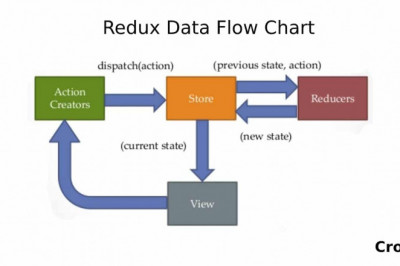views

What Are Internal Links And How You Can Use Them To Improve Your Website SEO
Photo by Kelly Sikkema on Unsplash
As a website owner, you’re always on the lookout to gain more traffic on your website. You might be wondering if there are tools already at your disposal to achieve this. So you may have already heard about internal links. What are internal links? And how can you use them to improve your website SEO?
An internal link is a hyperlink that connects one page to another within the same website. Since it is internal, the source and target page are on the same domain. So, in effect, you are guiding your reader through the pages within your website.
Given that the reader is already on your website, how could using internal links improve your SEO?
In a case study by Ninja Outreach, they found that internal linking can increase traffic by over 40%. Without any other optimisation efforts at the time of the study, they set out to make the crawling experience easier for search engine robots from the main content pages.
It was established that internal linking strengthens the overall SEO value of your website. Not only does it create the paths for spiders. But it allows a prolonged session for your users as well.
Using internal links strategically will enable you to send page authority to important pages. Also known as PageRank score, this algorithm may no longer be visible. But it SEO experts and practitioners still continue to keep this in mind, as it remains part of Google’s ranking system.
Capitalising on the usefulness of internal links, let’s look at how we can use them to improve your website’s SEO.
Search Engine Optimisation or SEO is the practice of optimising your website to gain more traffic through organic means. The goal is to increase your site’s visibility through placing in the search engine rankings.
Here are ways to use internal links to improve website SEO:
1. Build your SEO-friendly site architecture with internal links
Photo by Alvaro Reyes on Unsplash
It’s all about balancing how Google and your users find what they need on your website. From your main navigation page, you should know how links are formed to connect major pages to each subsection.
From here, you’ll be able to discover the map you’ve created with your own links to and from your other content. You’ll then have an idea why some pages are ranking well. And why some are not.
With the understanding of the flow of your website, you can now make appropriate changes.
2. Use links for better reader experience
Your reader should be the primary concern when it comes to your internal links. With these, you are guiding them to useful information, thereby providing value to them.
User engagement is increased as they spend more time and view more pages on your website. Content links communicate to both the search engine and the user that the content you’re linking to is really good. With this action, you are helping your reader and your SEO.
The Search Journal Engine suggests organizing content around topics. This way you can prioritize what gets top-level focus. And not be too concerned that some content are multiple clicks deep.
3. Share your homepage juice
Graphic by Neil Patel
Most likely, your homepage has the most authority on your entire website. It usually has more links than your second most-linked to page. Pages that need more ranking could then be linked strategically from your homepage.
4. Revive old pages
An old article from maybe a year ago can be rich in content that is still relevant now. Surely, you have new articles where you can internally link to. Without producing new content, you were able to generate more internal links.
5. Link deep
In his article, Neil Patel says that the best links are found deep within the structure of a site. So make sure to strengthen internal pages. Rather than pointing more internal links towards the homepage. He also advises against linking to the ‘Contact us’ page unless absolutely necessary.
6. Use anchor texts wisely
It’s best to use descriptive keywords in anchor text that give readers an idea what the source page is trying to target. You’ve already determined that valuable information is linked to your anchor text. Make sure that the reader knows that as well.
To keep things interesting and diverse, make sure to use different anchor texts each time.
7. Create more content
Obviously, in order to link to more content, you need more content. Keep writing more quality articles because that’s the foundation of SEO. Do the hard work. And review your existing articles every so often to look for opportunities for internal links.
Internal links are useful tools that could help improve your website SEO. They strengthen your SEO efforts by giving structure to the website and flow to the reader’s visit. Learning to take advantage (without overdoing it) of it will benefit you, the search engine spiders, and your readers.












